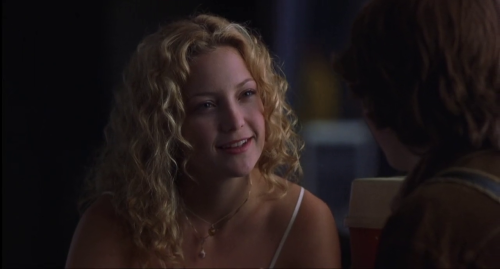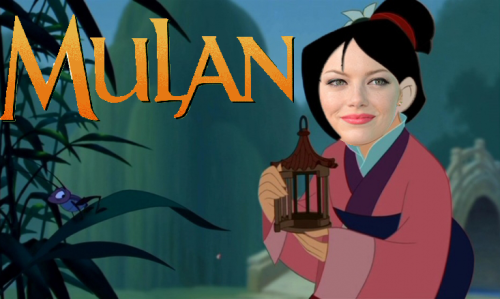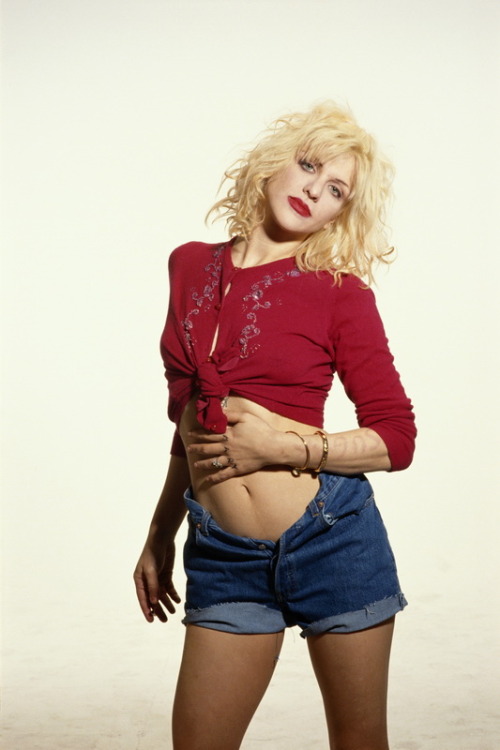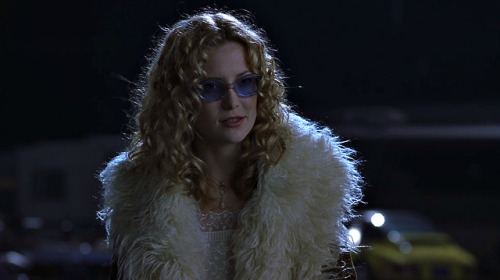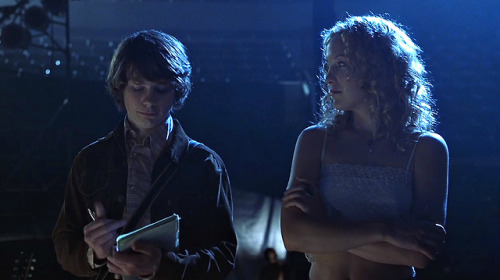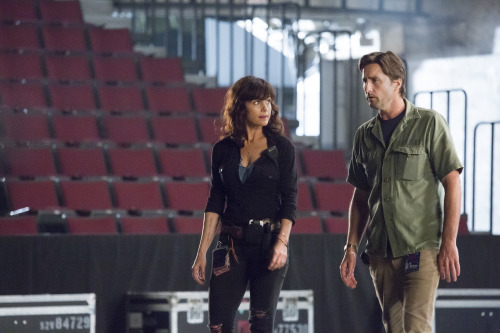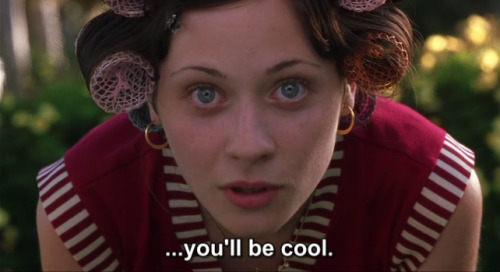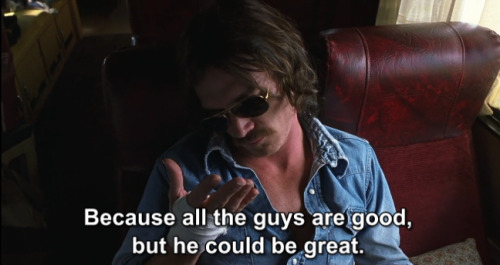#cameron crowe
Say Anything - Trailer
A noble underachiever and a beautiful valedictorian fall in love the summer before she goes off to college.
In theaters April 14, 1989 (USA)

According to actress Nancy Olson, before filming on the set of SUNSET BLVD. (‘50) in Norma Desmond’s mansion, the cameraman would rub his hands together crushing stone which created dust, then blew the dust on the camera lens, an effect, which encapsulated the ambiance of stagnant corners haunted with memories of the past. One of the most difficult tasks to execute in a retrospective period piece is to precisely immerse an audience. It takes more than vintage vehicles and costumes to fully capture the aura of an era.
Reverting to centuries ago seems an easier feat than reflecting the later years of the 20th century, perhaps because many of us can still attest to it. With most modern-day period pieces, what should be exceptional based on the subject matter alone, unfortunately resembles a costume party. A few feel-good films that readily accomplished this feat of transporting their audience include DAZED AND CONFUSED (‘93), THE SANDLOT (‘93), DETROIT ROCK CITY (‘99) and ROLL BOUNCE (2005). Although some of these films may not be hugely popular, each power-up their flux capacitor, fill the tank with plutonium and hurdle their audiences back in time.
We don’t know what director/producer/screenwriter and Academy Award-winning Cameron Crowe sprinkled on his camera lens for ALMOST FAMOUS (2000, the film takes place in the ‘70s so take your pick). Still, the film, which celebrated its 20th anniversary in 2020, beams with the spirit of black lights, velvet posters, Don Kirschner’s Rock ConcertandThe Midnight Special performances. It would only stand to reason, as Crowe is an avid fan of classic film director Billy Wilder, director of SUNSET BLVD.
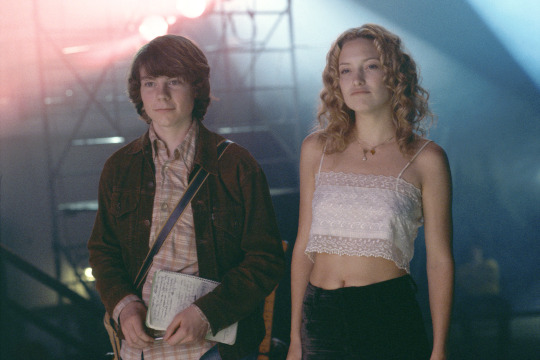
Based on Crowe’s true-life experience as a teenage reporter for Rolling Stone magazine, ALMOST FAMOUS mirrored classic film by layering the correct actors, costumes, dialogue, sets and of course an exacting soundtrack. For those of us mature enough to recall the ingrained crackle of a needle against vinyl and the scraping of a lead pencil against paper (all of us know that sound), from the opening credits, Crowe utilizes simple auditory cues and visuals powerful enough to immediately engross his audience until the film’s end.
In his first feature film role, the innocence of Patrick Fugit’s portrayal is perfectly and adorably awkward. When Lester Bangs (Philip Seymour Hoffman) urges William (Fugit) “to be honest and unmerciful,” the look on William’s face reveals a naive boy who is about to be eaten alive. Although not their first roles, the enchanting Kate Hudson and the fresh-faced Zooey Deschanel both shine in their breakout roles, with each demonstrating exceptional performances. And, if you ever had a doubt of which Philip Seymour Hoffman performance to watch, this may be it, or perhaps, every Philip Seymour Hoffman performance is the one to watch.
Truly, every performance in the film is exceptional. With almost half the cast being newcomers, in theory ALMOST FAMOUS should not have worked as seamlessly as it did, but according to Hudson during a recent ALMOST FAMOUS reunion, its synergy was the result of “…a magical group of people.”

Conjuring indelible memories by adeptly fusing scenes with music, ALMOST FAMOUS leaves a lasting impression on the psyche which had to be a painstaking process since creating such powerful associations means there can only be one exacting fit. If you’ve seen the film, I’d wager that every time you hear Elton John’s “Tiny Dancer,” you recall a sunlit tour bus driving through cornfields with the occupants joining together in an impromptu sing-along, lending an entirely new appreciation for an old song, or if you happen to hear Brenton Wood’s “The Oogum Boogum Song” you recollect William dwarfed by boys supposedly his own age in the throes of puberty grooming themselves in a mirror. When Simon & Garfunkel’s “America” plays, we witness the exact moment a young boy converges with his future while running his fingers over newly discovered album covers as if taking them in by osmosis.
On the surface, ALMOST FAMOUS is about the once-in-a-lifetime adventure of a teenage journalist, but according to Crowe, and quite apparently, it’s an endearing love letter to music. You certainly don’t need to be a fan of ‘70s rock to enjoy ALMOST FAMOUS, you simply need to be a music fan period. Like revisiting an old time capsule, it’s is a film where you can easily lose yourself and even though the majority of us haven’t toured with a rock’n’roll band during the ‘70s, ALMOST FAMOUS captures its journey so succinctly, hitting every note that it’s difficult to convince yourself you weren’t actually there. Billy Wilder would approve.

Jerry Maguire, Cameron Crowe

Vanilla Sky, Cameron Crowe


Say Anything (1989)


Say Anything (1989)
Personally, I think it’s great that we’re finding more casting opportunities for Emma Stone.
Post link

by KIMBERLY-ROSE KA’IULANI WOLTER
In his latest film, Aloha, Cameron Crowe has written one of the most prominent hapa characters in a big budget motion picture: Allison Ng. For the mixed-race role, he’s cast the oh-so-very white actress, Emma Stone. On his website, Crowe explains, “Captain Allison Ng was written to be a super-proud ¼ Hawaiian who was frustrated that, by all outward appearances, she looked nothing like one.”
To understand why I, as a hapa, find the casting problematic, let me tell you a little more about what it is to be hapa.
Hapas come in all shades and any combination of eye color, hair and complexion. It’s often what makes us exotic to others, hard to place ethnically—or, what completely alienates us from our own people. We can blend in or stand out.
My mother is Hawaiian, Korean and Chinese. My father was French, German and Hungarian. I was born and raised in Hawai’i and moved to Los Angeles to pursue an acting career when I was 20. (Side note: “Hawaiian” does not mean you’ve lived in Hawai’i for 20 years; it means you can trace ancestral lineage prior to when British explorer Captain James Cook arrived in 1778.)

There is a certain discomfort to spending most of your life being misunderstood and inappropriately labeled. Since leaving Hawaii, where being hapa is common, I’ve learned the world does not agree on what I am.
My first day in L.A., someone spoke to me in Spanish; I was flustered yet flattered. “I don’t speak Spanish, I’m from Hawai’i,” I explained.
During my first media interview as an actress, a journalist from China asked me, “What does it feel like to be Asian?” As if being Asian was a perfume I sprayed on.
A few years later, when I went to Virginia to meet my white boyfriend’s mother for the first time, she squealed, “Oh, it’s okay ‘cause you don’t look Asian.”
I’ve learned people are comfortable generalizing about my race or being outright racist because I “don’t count” as Asian Pacific Islander. I’ve also learned I’m a chameleon of sorts—people identify me based on their experiences. White people think I’m white, while in Latin countries I’m mistaken for a Latina. Asians suspect that I’m lying about my race while hapas seem to recognize other hapas. The irony is, growing up, my cultural identify didn’t come from what I looked like—it was rooted in who raised me. My mother—a beautiful and strong Hawaiian, Chinese, Korean single woman—I came from her; I identified with her.
Imagine my surprise when I got older and realized that’s not how people saw me.
I get it: we hapas are hard to pin down because we are Asian, Black, Hispanic, Indigenous, Polynesian and White. The only thing we are not is one exclusive race. Being mixed is what defines us. Maybe for the general population that’s hard to comprehend because there is a loss of origin or we are not easy to externally categorize.
Read full article here.
“My mom had an instant connection with Courtney: ‘I see that girl clearly, there’s real pain in that girl, real passion.”
- Cameron Crowe; pics by Kevin Cummins 1993.
Post link
“Music, you know, true music, not just rock n roll, it chooses you. It lives in your car, or alone listening to your headphones, you know, with the cast scenic bridges and angelic choirs in your brain. It’s a place apart from the vast, benign lap of America.”
Almost Famous (2000)
dir.Cameron Crowe
Post link

Penélope Cruz In Vanilla Sky Directed By: Cameron Crowe(2001)

Vanilla Sky (2001) dir. Cameron Crowe

Ione Skye

